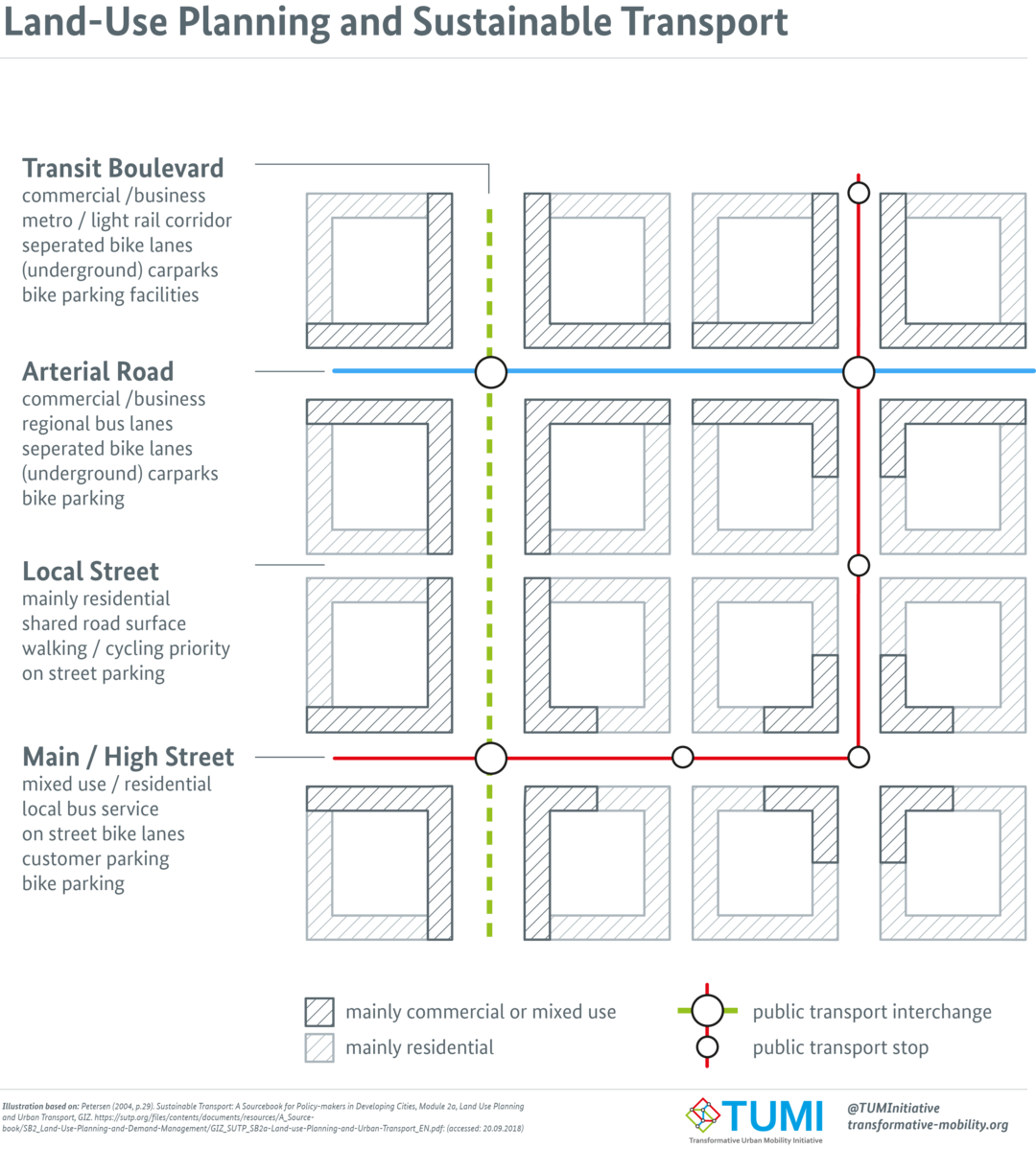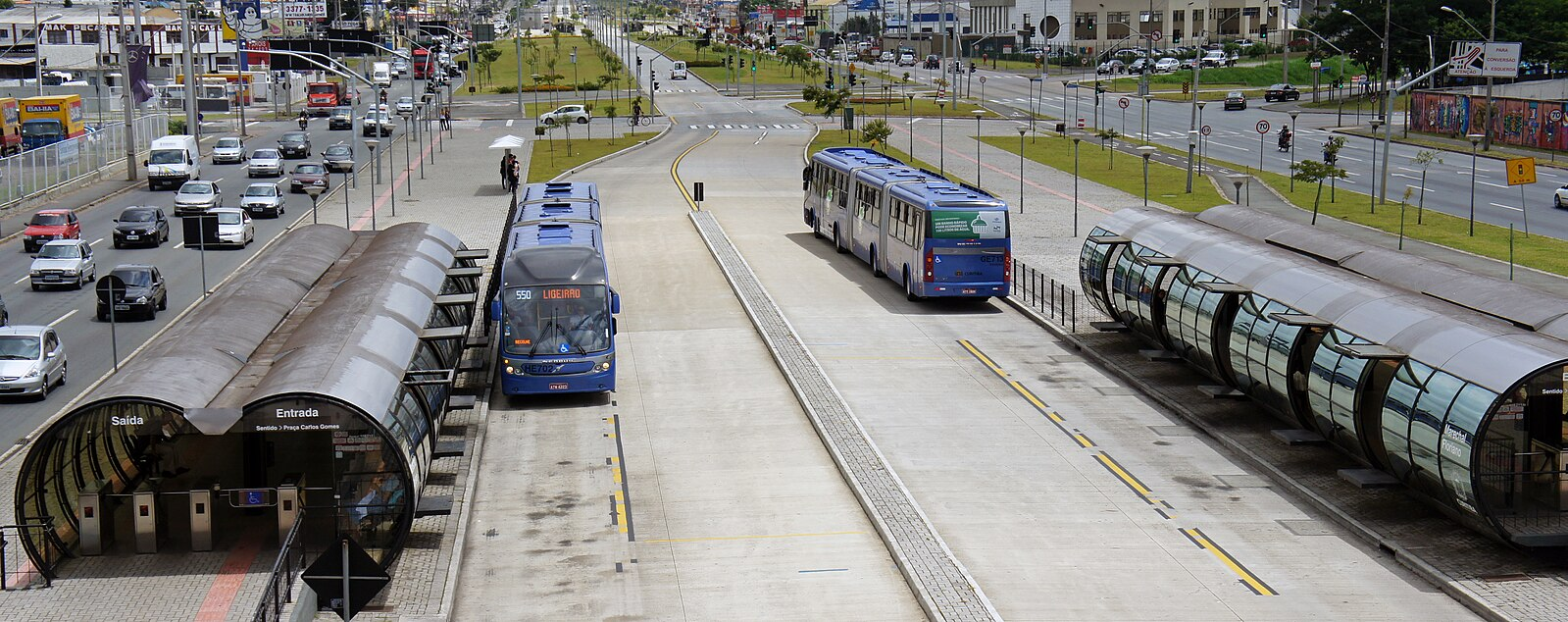IB Syllabus focus:
‘Planning allocates land and balances stakeholder needs. Sustainable planning integrates affordable housing, transit, green space, safety, jobs, renewables, recycling, efficiency, and community participation; include one real example.’
Urban planning shapes how cities grow and function. Sustainable approaches ensure that development balances human, environmental, and economic needs while addressing long-term resilience and quality of life.
Understanding Urban Planning
Urban planning refers to the organisation of land use and the management of urban growth through formal policies and strategies. Its central goal is to balance competing demands among stakeholders such as governments, businesses, and citizens. Without planning, cities may expand chaotically, causing inefficiency, environmental damage, and social inequality.
Urban Planning: The process of designing and regulating land use, infrastructure, and services in order to manage urban growth and development sustainably.
A strong planning system seeks to prevent uncontrolled urban sprawl, protect ecosystems, and ensure equitable access to services and opportunities.
Core Principles of Sustainable Urban Planning
Sustainable urban planning goes beyond basic land allocation by embedding long-term environmental and social goals. Key elements include:
Affordable housing: Ensuring citizens have access to secure, cost-effective living spaces.
Efficient transport systems: Designing cities with integrated public transit, pedestrian zones, and cycling networks to reduce car dependency.
Green space provision: Including parks, green roofs, and urban forests to improve air quality, health, and biodiversity.
Safety and security: Designing safe public areas and resilient infrastructure against hazards.
Economic opportunities: Facilitating job creation through mixed-use development and business support.
Renewable energy use: Promoting solar panels, wind power, and district heating systems to reduce fossil fuel dependence.
Waste and recycling systems: Implementing circular economy principles by minimising waste, reusing materials, and improving collection systems.
Energy and water efficiency: Ensuring buildings and infrastructure reduce resource consumption through technology and design.
Community participation: Involving residents in decision-making to enhance social equity and responsiveness.
Sustainability (urban context): A development approach that ensures present needs are met without compromising environmental integrity or the ability of future generations to thrive.
These elements together make cities more liveable, resilient, and adaptive to climate change.
Balancing Stakeholder Needs
Urban planning involves multiple stakeholders, often with conflicting interests:
Governments seek economic growth and tax revenues.
Businesses and developers pursue profit through construction and commercial projects.
Residents demand affordable housing, services, and a healthy environment.
Environmental groups aim to protect ecosystems and reduce pollution.
Balancing these interests requires careful negotiation and compromise. Sustainable planning frameworks, such as participatory planning, ensure that citizens’ voices are heard alongside corporate and government priorities.
Real-World Example: Curitiba, Brazil
A widely studied example of sustainable urban planning is Curitiba in Brazil. Since the 1970s, Curitiba has implemented innovative strategies including:
A bus rapid transit system (BRT) with dedicated lanes, reducing traffic congestion and emissions.
Strict land-use controls to prevent uncontrolled urban sprawl.
Large investments in green spaces, with parks that also act as flood defences.
Comprehensive recycling and waste separation programmes, with incentives for community participation.
Curitiba demonstrates how long-term, integrated planning can enhance environmental quality, economic efficiency, and social equity.

Diagram of land-use planning integrated with sustainable transport. It shows transit boulevards, bus lanes, mixed-use streets, and cycle facilities arranged to prioritise safe, efficient, low-carbon mobility. Labels clearly indicate street functions and modes. Source.

Curitiba’s Bus Rapid Transit with a tubular station and level boarding illustrates integrated land-use and transport planning in practice. Features such as off-board fare payment and dedicated lanes improve throughput and reliability, supporting sustainable urban mobility. Source.
Tools and Strategies for Sustainability
Urban planners use a range of strategies and frameworks to embed sustainability into development:
Land-use Zoning
Dividing urban space into residential, industrial, and commercial zones helps regulate growth and prevent environmental degradation. Mixed-use zoning, however, encourages walkability and reduces travel demand.
Transit-Oriented Development (TOD)
Planning compact, mixed-use communities around public transport hubs reduces reliance on private vehicles, lowering congestion and emissions.
Smart Growth
Smart growth principles focus on efficient infrastructure, higher-density housing, and protection of rural and natural land.
Green Infrastructure
Urban infrastructure designed to mimic natural systems (such as permeable pavements, rain gardens, and rooftop gardens) supports water management, biodiversity, and reduced heat island effects.
Linking Urban Planning to Global Challenges
Urban planning has direct implications for climate change mitigation and sustainable development goals (SDGs). Cities contribute around 70% of global carbon emissions, so planning decisions about transport, energy, and housing directly affect global sustainability. Aligning planning with the SDG 11: Sustainable Cities and Communities goal highlights the central role of well-designed urban systems.
Challenges to Implementing Sustainable Planning
Despite its benefits, sustainable planning faces obstacles:
Financial constraints: Large upfront costs for green infrastructure and renewable technologies.
Political pressures: Short-term political cycles can discourage long-term investments.
Social inequality: Urban renewal projects sometimes displace vulnerable populations.
Cultural and behavioural resistance: Citizens may resist lifestyle changes such as reduced car use.
Addressing these challenges requires strong governance, community engagement, and international cooperation.
Future Directions in Urban Planning
Modern trends highlight innovative approaches such as:
Smart cities using data and digital technologies to manage energy, transport, and resources efficiently.
Resilience planning to prepare for climate-related hazards such as floods and heatwaves.
Biophilic design integrating nature into buildings to improve mental health and environmental quality.
Circular economy models applying resource recovery, recycling, and closed-loop systems to urban design.
These approaches aim to make cities more adaptive, resource-efficient, and supportive of long-term sustainability.
FAQ
Conventional urban planning often focuses on short-term economic growth, infrastructure expansion, and land allocation with limited consideration of long-term impacts.
Sustainable urban planning integrates environmental, social, and economic factors. It seeks to reduce carbon emissions, protect ecosystems, and create resilient communities while balancing stakeholder needs.
Community participation allows residents to influence decisions about housing, transport, and services. This increases acceptance of policies and reduces resistance to change.
It also ensures that planning reflects the needs of diverse groups, improving social equity and making urban systems more adaptable and inclusive.
Green spaces provide multiple ecosystem services, such as:
Air quality improvement through carbon absorption.
Cooling urban heat islands.
Flood control through permeable surfaces.
They also enhance social wellbeing by providing recreational opportunities and improving mental health.
Efficient public transport reduces reliance on private cars, lowering emissions and congestion.
Integration with walking and cycling infrastructure ensures accessibility, affordability, and inclusivity, making cities healthier and more sustainable.
Key challenges include limited funding, weak governance, and rapid population growth.
Informal settlements and poor infrastructure often make long-term planning difficult. Political instability and competing priorities may also delay sustainable initiatives.
Practice Questions
Question 1 (2 marks)
Define the term urban planning and explain why it is important for sustainability.
Mark Scheme:
1 mark for a correct definition: e.g. “Urban planning is the process of designing and regulating land use, infrastructure, and services to manage urban growth.”
1 mark for explaining its importance to sustainability: e.g. “It ensures cities develop in ways that balance social, economic, and environmental needs, preventing uncontrolled growth and environmental degradation.”
Question 2 (5 marks)
Using an example, explain how sustainable urban planning can reduce environmental and social problems in cities.
Mark Scheme:
Up to 2 marks for identifying features of sustainable planning (e.g. public transport systems, green spaces, renewable energy use, waste management).
1 mark for linking these features to reduced environmental problems (e.g. less air pollution from reduced car use, improved biodiversity in green areas).
1 mark for linking these features to reduced social problems (e.g. improved access to affordable housing, enhanced health and wellbeing from green space).
1 mark for providing a valid real-world example (e.g. Curitiba’s bus rapid transit system, green spaces as flood defences).

